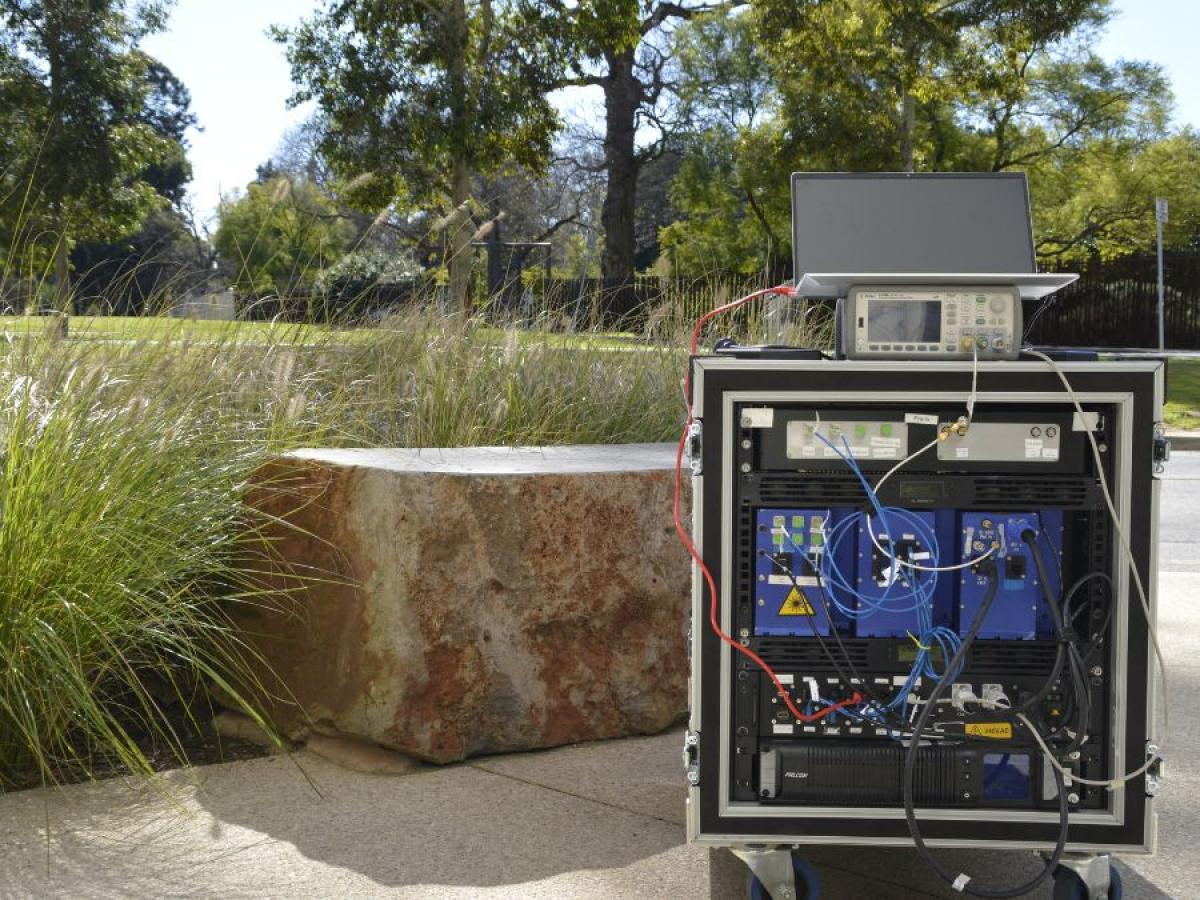Portable Atomic Clocks
Accurate and assured knowledge of time is critical to numerous defence and civilian operations including distributed computing, communications, and navigation.
Most of these systems depend on satellite-based timing networks (such as GPS) to achieve timing accuracy and synchronisation. There is, however, a growing concern regarding the fragility of GPS - both through its vulnerability to intentional jamming or spoofing, as well as loss of signal due to environmental conditions. These circumstances require the development of alternative secure and independent sources of time to allow Australia to mitigate the vulnerability associated with our current reliance on GPS.

Part of the PACs team at Pearl Harbor, Hawaii for RIMPAC 2022
The Portable Atomic Clocks team at the University of Adelaide is a diverse team of early-career researchers who have been working to solve this problem. Since 2019 the team has been developing clock technologies that are not only capable of providing independent and assured timing signals in GPS-denied environments, but also to deliver signals that out-perform timing derived from GPS by many orders of magnitude.

Portable Atomic Rb Clock
The clocks – an ytterbium atomic clock and a rubidium 2-photon atomic clock – are robust and field-capable with turn-key operation while achieving frequency stabilities better than 1 part in 1014. This is an improvement over the best-in-class commercially available devices by up to 100-fold over short time scales. Our group has developed these systems so that they can fully cold-start, detect internal errors and restart, and monitor internal systems to keep all within operational range. To our knowledge, no one else has done this previously on such a complex piece of time and frequency technology.
Portable Atomic Clocks Plot
This plot is to be used as a resource for those interested or involved in precision timing. The plot shows where each clock sits in terms of its performance (instability) vs its Size, Weight, and Power (SWaP). The lower the instability, the better the performance. The lower the SWaP, the more portable/deployable the device.
For Postdoctoral, Honours, Masters and PhD opportunities, please contact Prof. Andre Luiten for more information.

